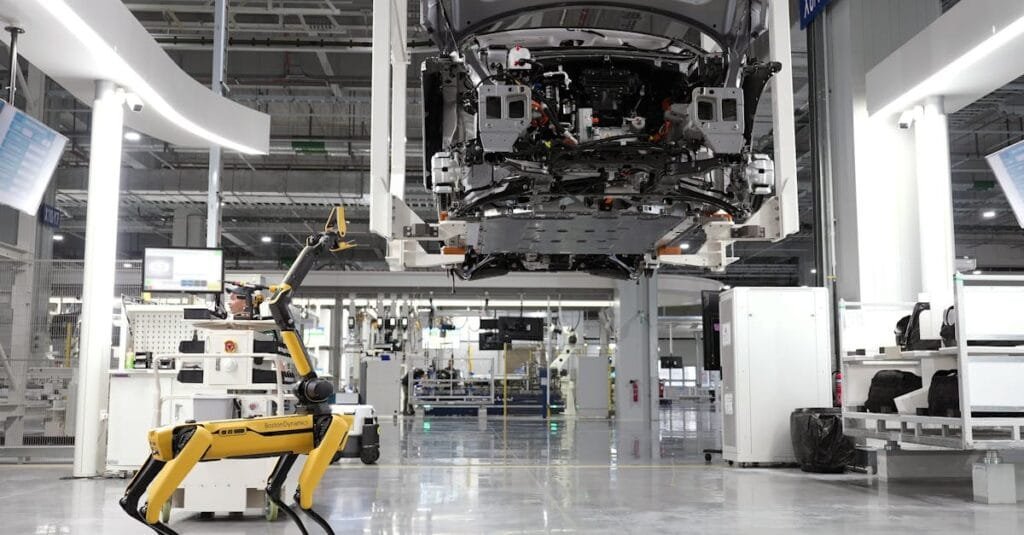Ever sat at your desk, drowning in mundane tasks, wishing for a magic wand to wave away the hours spent on repetitive processes? You’re not alone. In shared services, the struggle can seem insurmountable, especially when it feels like endless data entry and manual workflows are eating away at your valuable time. Let’s face it: traditional methods just don’t cut it anymore.
Enter automation, RPA (Robotic Process Automation), and hyperautomation. These aren’t just buzzwords; they’re fundamental changes transforming the way we think about work in the shared services industry. As someone who’s been in the trenches for over 20 years, I’ve seen firsthand how these technologies can reshape our processes. And believe me, it’s time to shift our mindset toward embracing these innovations.
Understanding the Basics: Automation, RPA, and Hyperautomation
Let’s break it down simply: automation is about using technology to perform tasks with minimal human intervention. RPA takes this a step further by employing software robots to handle repetitive and rule-based tasks. Hyperautomation, however, is where things get really interesting. It’s all about integrating advanced technologies—like AI and machine learning—into automation processes to create an intelligent workflow ecosystem.
- Automation: Streamlining tasks
- RPA: Robots doing the heavy lifting for repetitive jobs
- Hyperautomation: The integration of AI to enhance process automation
Why Should You Care? The Benefits of Automation in Shared Services
Okay, so why should you care about diving into this pool of tech-savvy possibilities? Here are the real, tangible benefits:
- Increased Efficiency: Automating routine tasks lets your team focus on strategic initiatives. Think about it: more time for innovation means better outcomes.
- Cost reduction: By automating processes, you’re not just saving time but also reducing operational costs. How? Less manual labor means fewer errors and less wasted resources.
- Improved Accuracy: Robots don’t get tired; they don’t make mistakes like humans do. With RPA, you can wave goodbye to human error and hello to precision.
- Scalability: Automation tools grow with you. When business demands increase, your operations can scale without missing a beat.
How to Get Started with Automation and RPA
Feeling the itch to get started? It can feel overwhelming, but it doesn’t have to be. Here’s a quick guide on how to navigate your journey:
- Identify Repetitive Tasks: Take a good look at your daily operations. Which tasks are repetitive and time-consuming? Make a list!
- Assess Tool Options: There are plenty of tools out there for RPA—UiPath, Automation Anywhere, and Blue Prism are just a few. Think about your specific needs and do a bit of research.
- Start Small: Pick one process to automate. It might be something as simple as data entry. Test it out and adapt based on what you learn.
- Get Buy-In: Bring your team on board. Share the benefits of automation and how it will make their lives easier. Resistance is often about fear of the unknown.
- Scale Gradually: Once you see success with small tasks, scale up. Automate more processes, and continue refining your approach.
Real-Life Examples of Successful Automation
Let me share a story. One of my clients, a major player in the finance sector, was drowning in invoice processing. The sheer volume was mind-numbing. They decided to go the automation route with RPA. Within weeks, they reduced processing time by 70%, which freed up a chunk of their team to focus on more strategic, value-added tasks. Their feedback? “Why didn’t we do this sooner?”
Another example comes from a global company in HR. After implementing an automated recruitment process, they streamlined candidate selections, engaged with potential hires quicker, and saw a noticeable improvement in their employer branding. They were no longer seen as slow movers in the hiring game.
The Road Ahead: Hyperautomation as the Future
Let’s talk about the future—hyperautomation. It’s not just a trend; it’s where innovation is headed. Hyperautomation is about creating synergy between humans and machines. It leverages AI, analytics, and advanced automation to create seamless workflows across an organization.
You may wonder: How does this affect you? Well, it means that the capabilities of your automation efforts will expand dramatically. Think smart reporting systems that provide insights before you even ask the right questions, predictive analysis that can foresee market trends, and decision-making support that evolves with your business landscape.
Moving Past the Fear Factor
Time to tackle the elephant in the room: fear of automation. Let’s face it—there’s a common concern about job loss. But honestly, aligning ourselves with RPA and hyperautomation doesn’t mean replacing people; it’s about evolving roles. Humans and machines working together can unlock new potentials.
Consider this: As automation takes over the boring stuff, your team can rise to more critical, satisfying, and creative roles. They’re not just cogs in a machine; they become problem-solvers and strategic thinkers.
Staying Relevant in an Automated World
Staying relevant in this fast-paced technological world requires being proactive. Invest in skills and training for your employees. Upskilling creates a flexible workforce that can adapt and thrive as changes occur. Organizations that don’t keep pace will find themselves lagging behind.
- Encourage Continuous Learning: Workshops, online courses, and peer learning can boost your team’s tech-savvy. You wouldn’t send a knight into battle without armor, right?
- Foster a Culture of Innovation: Create an environment where your team can brainstorm and pitch automation ideas. You’ll be surprised at what they come up with.
- Monitor and Adjust: Keep track of the effectiveness of your automation processes. Metrics matter, and refining your strategy based on data can yield better results.
Conclusion: Embracing Change
The shared services landscape is changing, and those who embrace automation, RPA, and hyperautomation will thrive. It’s about opening your mind to new possibilities, challenging the status quo, and pushing for process optimization. We’re not just trying to survive here; we’re aiming to elevate our capabilities and enhance the way we work.
Trust me, the days of mind-numbing data entry and tedious processes are fading quickly. By leaning into automation, you’re positioning your team to excel, innovate, and drive forward with confidence. The success stories are piling up, and with every organization that makes the leap, the impact becomes noticeably vibrant.
If you’re ready for a deeper dive into the world of shared services and want to explore transformation, innovation, and leadership, check out THEGBSEDGE blog, started by yours truly, Vikrant Aglawe.
By embracing these changes, you’re not just keeping up; you’re setting the pace. Welcome to the future of work.


